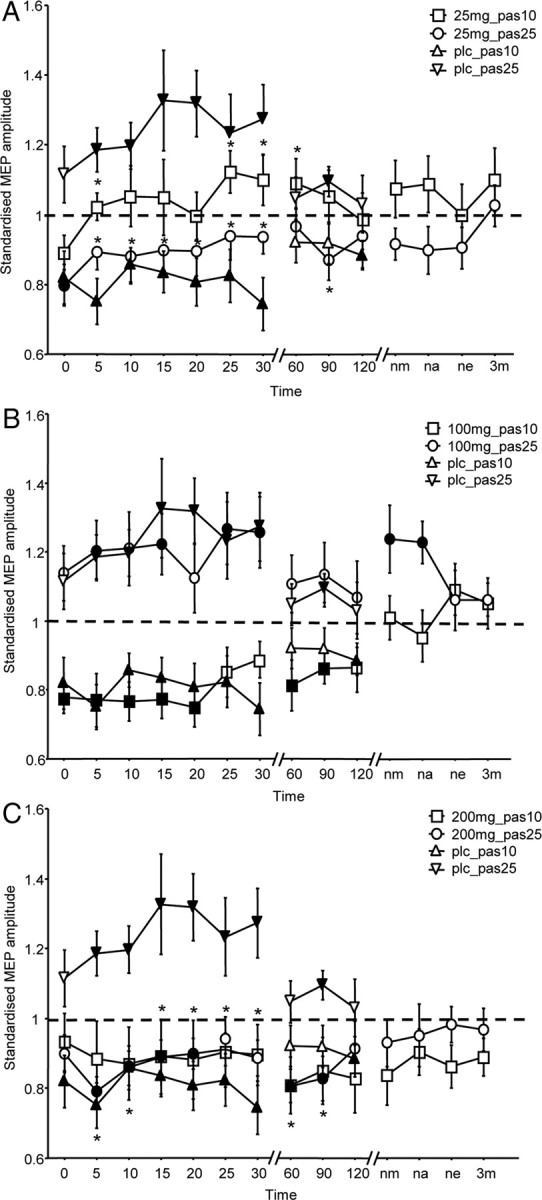Figure 2.

Dose-dependent effect of l-DOPA on PAS-induced neuroplasticity. The x-axis displays the time points (in minutes) of after-measurements during the experiment. MEP amplitudes standardized to the corresponding baseline values (mean ± SEM) are plotted on the y-axis. The graphs show that under placebo (plc) medication, facilitatory PAS-25 induces an excitability enhancement lasting for at least 30 min, whereas PAS-10 diminishes excitability for a similar duration following stimulation. A, Effect of 25 mg (low dose) of l-DOPA on the PAS-induced aftereffects. Low-dose l-DOPA reduces or abolishes the aftereffects of both PAS-25 and PAS-10. B, Medium-dose (100 mg) l-DOPA prolongs facilitatory PAS-induced plasticity, but does not alter the excitability-reducing aftereffects of PAS-10. C, High-dose (200 mg) l-DOPA reverses the facilitation induced by PAS-25 to inhibition while trendwise prolonging the inhibitory effect of PAS-10. Filled symbols indicate statistically significant deviation of the post-PAS values compared with the baseline. Asterisks indicate significantly different values in the l-DOPA condition compared with the placebo medication conditions at the same time points after the respective PAS protocols (Student's t test, paired, two-tailed, p ≤ 0.05). nm, Next morning; na, next afternoon; ne, next evening; 3m, morning of the third day.
